Ingredients
-
3 cups Soybeanssoaked soybeans
-
1.2 liter WaterAdding water depends on the desired milk concentration.
Directions
Have you ever wondered how to make your own soy milk?
Soy milk is a fantastic non-dairy alternative derived from soybeans.
In this process, soybeans are soaked in water, and then crushed or soybean powder is prepared. Then, a mixture of water and chopped soybeans can be converted into soy milk simply by using filters and removing the solids in the mixture.
Soy milk has a mild taste that blends well with other foods.
This milk is an excellent choice for those who follow a vegetarian or dairy-free, or lactose-free diet or anyone looking to incorporate high-protein products into their meals.
When I transitioned to a vegan lifestyle, I thought vegans didn’t drink milk, and I was clueless about could make my own vegan milk.
But after a few months, I decided to try it and made my very first glass of soy milk. I used a hand blender, and it turned out amazing! I was overjoyed and started recommending it to everyone.
That’s when I realized I could prepare all sorts of plant-based milk comfortably in my own kitchen. So, I bought a mixer and began experimenting.
That was just the beginning of my plant-based milks adventure.
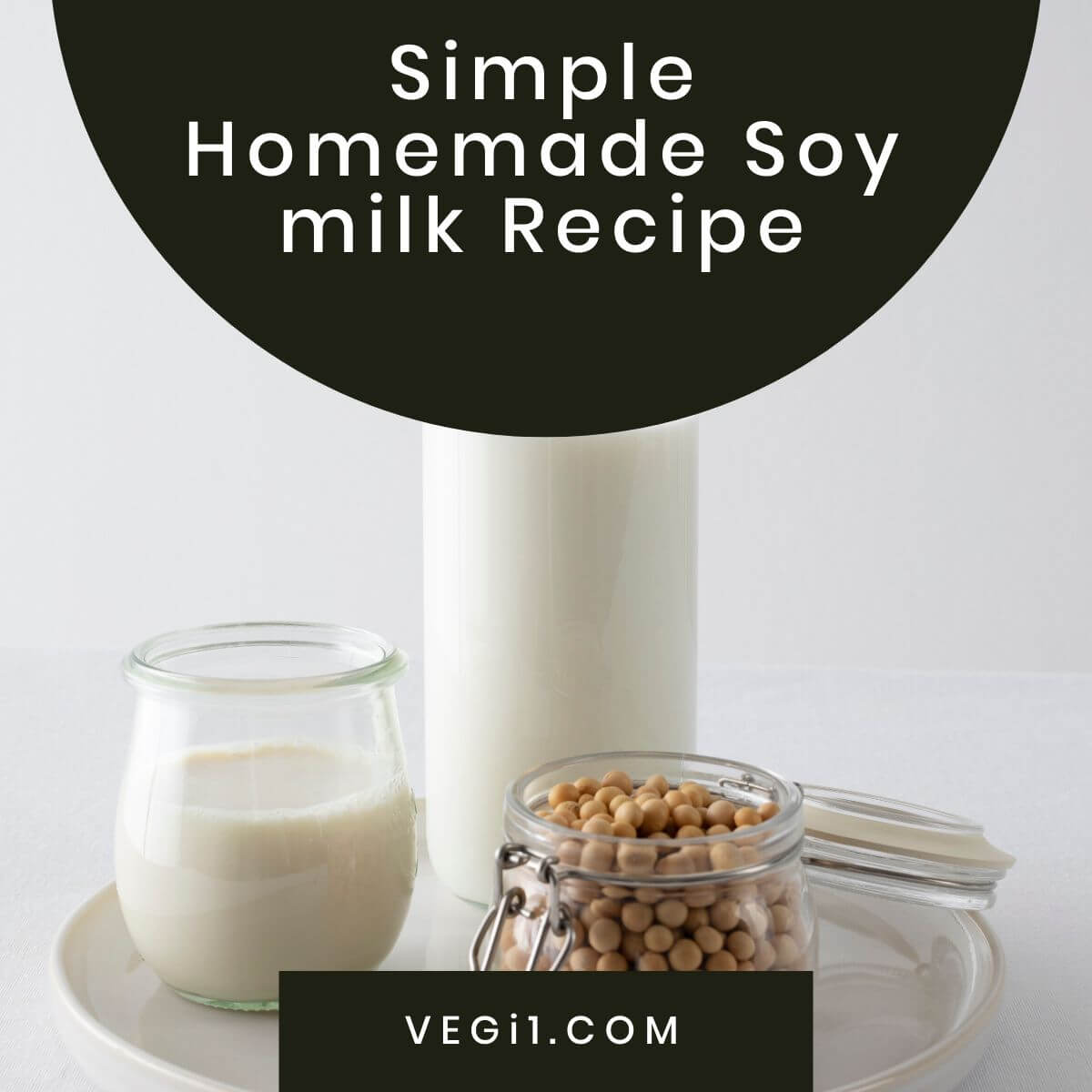
Do not throw away soybean meal!
In addition to making soy milk, you can get creative and try exciting recipes like soy burgers and white mayonnaise sauce with soy milk pulp.
- How to make Mayonnaise sauce with soy pulp
- How to make Soy burger with soy pulp
- How to make Homemade Soy Tofu
Now, let’s talk about the properties of soy milk. This delightful beverage is loaded with essential nutrients such as isoflavones, fibers, proteins, omega-3 fatty acids, iron, calcium, zinc, magnesium, potassium, sodium, vitamins (including vitamin B6), and other micronutrients.
One of the remarkable qualities of soy milk is its high protein content. Among all vegetable protein sources, soy protein possesses the highest biological value. It contains essential amino acids, which are the building blocks of protein.
Are you intrigued yet? There’s more!
Soy milk offers some incredible benefits. Firstly, it’s lactose-free, making it an ideal choice for individuals who are lactose intolerant or struggle to digest lactose found in dairy milk.
You can enjoy a convenient alternative without compromising on taste or nutrition.
Additionally, soy milk is lower in cholesterol and saturated fat compared to dairy milk.
Soy milk is also lower in cholesterol and saturated fat compared to dairy milk, which is beneficial for maintaining a heart-healthy diet.
Now, let’s address a few frequently asked questions about soy milk:
Q: Is soy milk good for your health?
A: Absolutely! Research shows that soy milk promotes overall health and helps prevent conditions like high cholesterol and blood pressure.
Q: Is soy milk gluten-free?
A: Absolutely! Soy milk is gluten-free, making it a perfect choice for those seeking to eliminate gluten from their diet
Q: Does soy milk contain lactose?
A: Unlike cow’s milk, soy milk does not contain lactose, so lactose-intolerant people can consume soy milk without any problems.
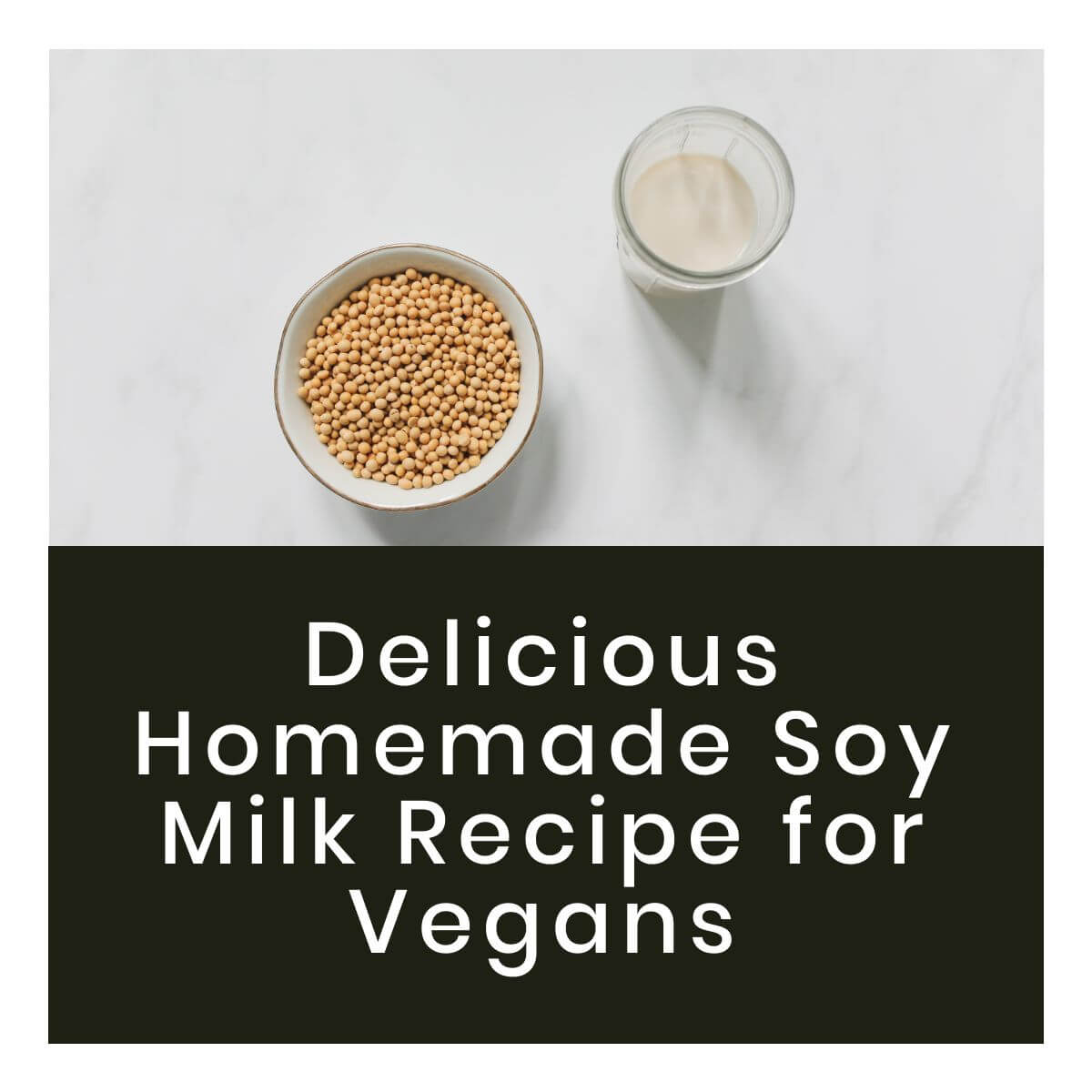
Before we dive into the recipe, here’s a pro tips:
- Use the freshest dry soybeans.
- Soaking the beans for at least 10 hours makes mixing and milking easier. After soaking, they should double in size or more. The container should be large enough to allow the beans to grow.
- You can use cheesecloth or muslin to compress the ingredients and separate the liquid.
- After soaking, remove the outer skin to reduce the bitterness of the beans. This step is optional and depends on how much time you want to spend.
- Be careful not to spill or dirty the ingredients on the gas stove when boiling.
- Boiling creates a thin layer on the material. You can split it or use it for cooking.
- Adjust the concentration of soy milk by adding or removing water.
- If you want to add flavor or sweetness to your soy milk, you can add sugar, vanilla, or any other flavorings you prefer to achieve your desired taste.
- Soy milk can be stored in the refrigerator for up to a week.
Enjoy making your own homemade soy milk and exploring its versatile uses!
If you’re ready to learn how to make homemade soy milk, I invite you to watch the video or follow the step-by-step tutorial written below.
Get ready to embark on this delicious and nutritious journey with me!
You need to login or register to bookmark/favorite this content.
Steps
|
1
Done
8-12 Hour
|
Soaking SoybeansWash the soybeans and then place them in a large water-filled bowl. Let them soak overnight, changing the water at least once. If the beans have absorbed much water, add more if needed. The soybeans should be doubled or more in size the next day. Check if they are soft and easily split with your finger; they may need to soak longer. Finally, discard the water and give the soybeans a thorough rinse. |
|
2
Done
|
If you want to peel the beansPour the soaked beans into a big bowl and cover them with water. |
|
3
Done
1-2 min
|
Mixing soybeans |
|
4
Done
|
|
|
5
Done
|
|
|
6
Done
|
|
|
7
Done
|
|
|
8
Done
|
|
|
9
Done
10-15 min
|
The difference between soy milk and other vegetable milk is that you must put it on heat.Put the pot on the stove with medium heat and let it boil. Remember to give it a good stir. Just be careful, as it might foam and overflow. Once the milk is cooked, go ahead and add some salt, flavorings, and sweeteners. I usually keep the soy milk on the flame until it reaches a temperature of around seventy degrees. |
|
10
Done
4-5 days
|
Milk storage |


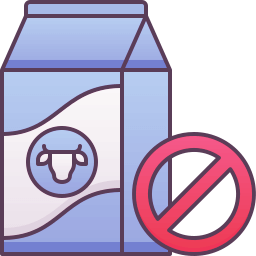



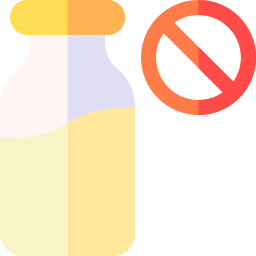








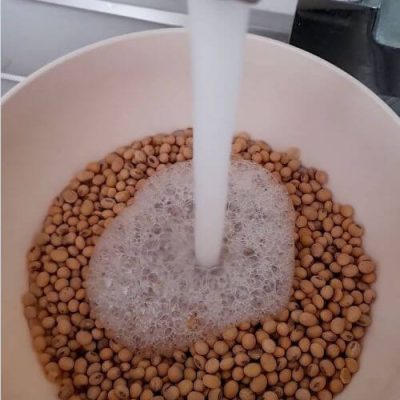


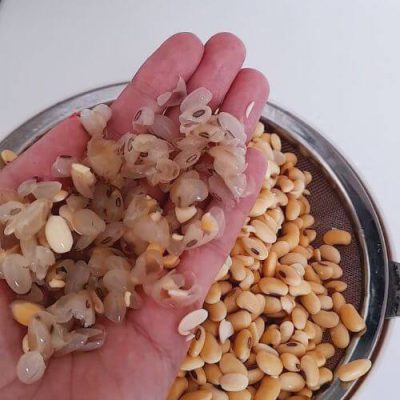
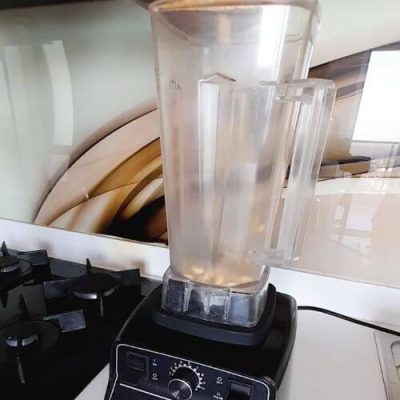
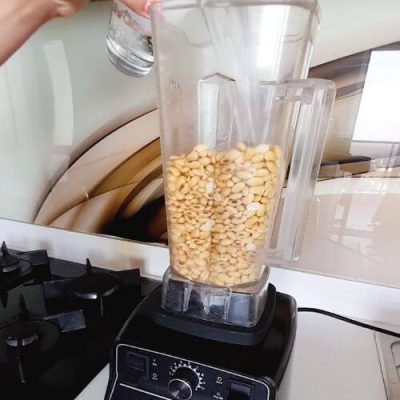
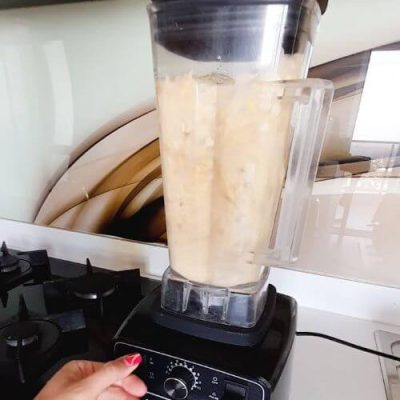


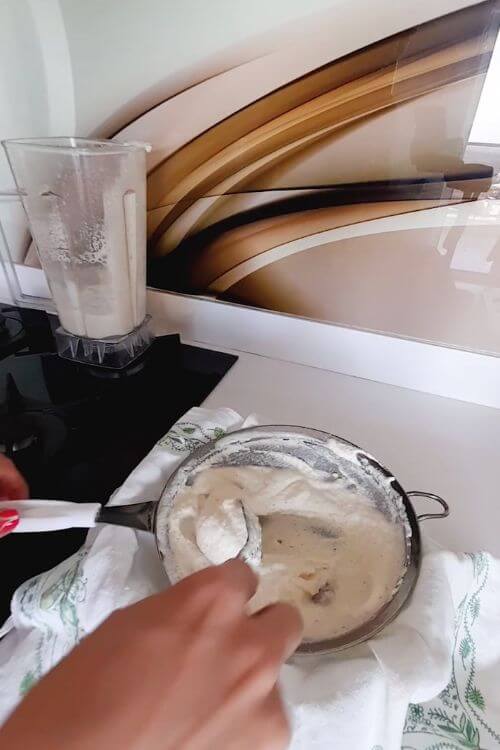
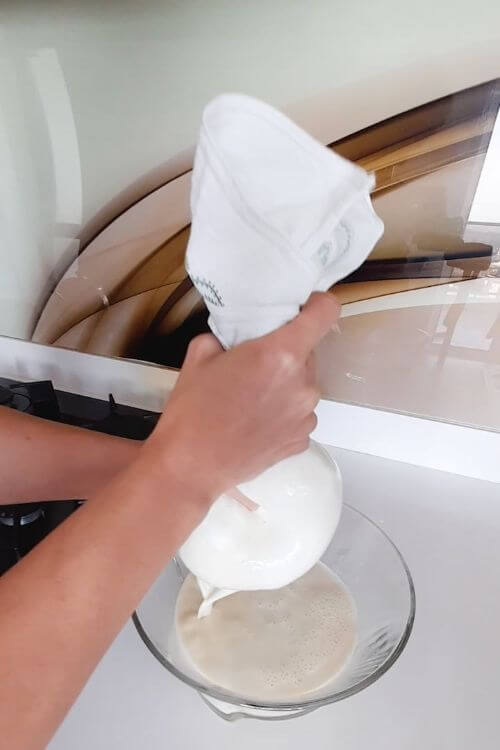
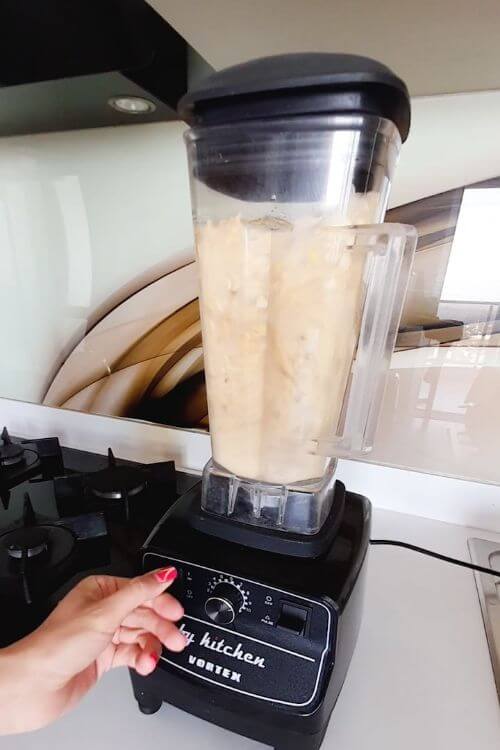
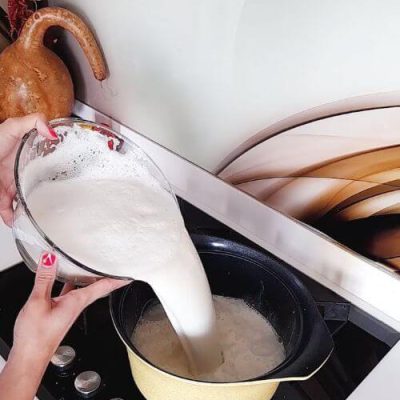
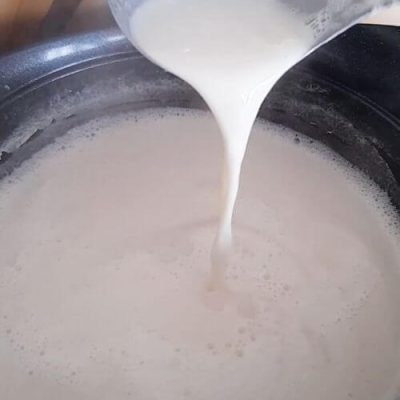
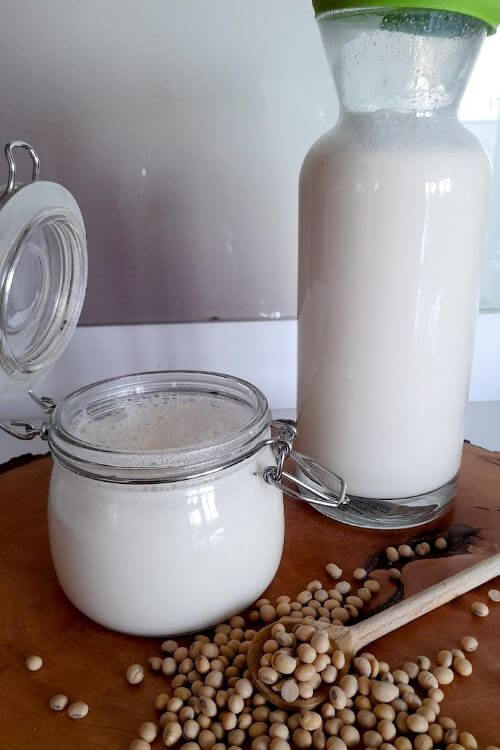



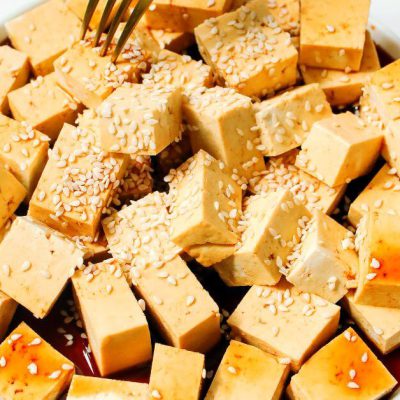


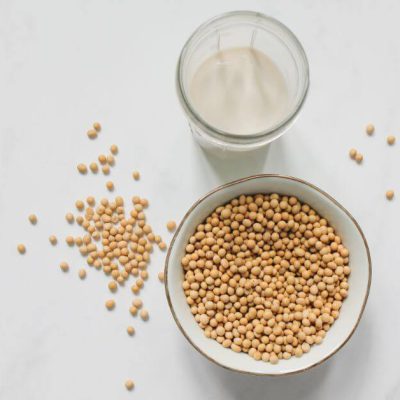
2 Comments Hide Comments
I love that I can make my own soy milk at home without any fancy equipment. The milk turned out so creamy and smooth, and I was able to control the sweetness level to my liking.
I’m so glad you enjoyed the recipe! Homemade soy milk is such a delicious and healthy alternative to store-bought soy milk.